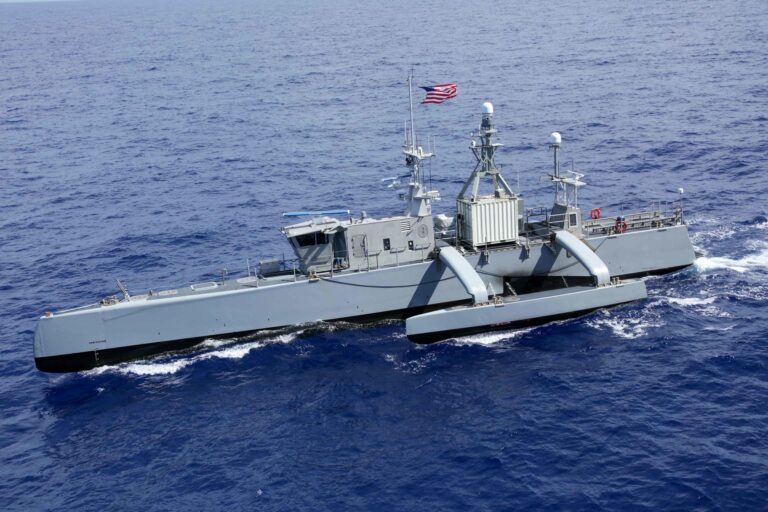Revolutionizing Maritime Defense: The U.S. NavyŌĆÖs Autonomous Vessel, Sea Hunter
Innovative Design and Advanced Technologies Powering Sea Hunter
The U.S. NavyŌĆÖs Sea Hunter ushers in a transformative chapter in naval warfare through its state-of-the-art autonomous design. Featuring a streamlined hull engineered to reduce radar detectability and enhance fuel economy, this vessel maintains exceptional stability even in turbulent ocean conditions. Its navigation and operational capabilities are driven by sophisticated artificial intelligence integrated with an extensive array of sensors, enabling it to traverse thousands of miles of open sea without human control. Equipped with next-generation sonar systems and underwater surveillance drones, Sea Hunter excels at covertly identifying and tracking hostile submarines with remarkable accuracy. The shipŌĆÖs onboard AI processes acoustic data instantaneously, allowing it to make tactical decisions more swiftly than traditional manned vessels.
Built with resilience in mind, Sea Hunter incorporates multiple backup systems to guarantee mission success in challenging environments. Its modular framework facilitates quick technological upgrades, ensuring it remains at the forefront of maritime innovation. Key attributes of this autonomous platform include:
- Self-Guided Navigation: Utilizes cutting-edge AI for autonomous piloting across global waters
- Stealth Capabilities: Constructed with radar-absorbing materials and a hull designed for minimal acoustic footprint
- Extended Deployment: Supports missions lasting several months without the need for resupply
- Submarine Surveillance: Integrates advanced sonar and unmanned underwater vehicles for comprehensive tracking
| Feature | Details |
|---|---|
| Length | Approximately 40 meters |
| Top Speed | Up to 27 knots |
| Range | 10,000 nautical miles |
| Autonomous Operation Time | Up to 90 days |
Enhanced Submarine Detection and Tracking Capabilities
Sea Hunter is outfitted with a comprehensive suite of sensors and AI-powered systems designed for persistent, autonomous submarine surveillance. Its sonar arrays cover expansive underwater territories, while radar and electronic intelligence tools monitor surface and subsurface activities. The vesselŌĆÖs real-time data processing enables it to discern faint acoustic signatures that indicate the presence of enemy submarines, all while maintaining a low profile to avoid detection. This capability allows the Navy to maintain a continuous presence in contested maritime zones without the logistical constraints of crewed missions.
The platformŌĆÖs onboard AI prioritizes targets based on threat levels and mission goals, optimizing resource allocation and response times. Sea Hunter also seamlessly integrates with manned naval units and other unmanned systems, sharing intelligence to build a comprehensive maritime situational awareness. Core operational strengths include:
- Continuous Surveillance: Multi-sensor monitoring over vast oceanic expanses
- Instantaneous Threat Assessment: AI-driven classification and prioritization of contacts
- Collaborative Operations: Real-time data exchange with command centers and allied platforms
- Long-Duration Missions: Sustained autonomous presence for months at a time
| Capability | Function | Operational Advantage |
|---|---|---|
| High-Resolution Sonar | Precision acoustic detection | Enhanced submarine identification |
| AI Targeting Algorithms | Automated classification and tracking | Accelerated decision-making |
| Autonomous Course Management | Self-correcting navigation | Prolonged mission endurance |
Addressing Challenges and Ethical Questions in Autonomous Naval Warfare
While Sea Hunter exemplifies technological progress, deploying autonomous military vessels introduces multifaceted challenges beyond engineering. A primary concern is the dependability of AI in complex and unpredictable maritime combat situations. Operating with minimal human oversight raises critical questions about the systemŌĆÖs ability to accurately interpret ambiguous threats without inadvertently escalating conflicts. Cybersecurity also remains a paramount issue; unauthorized access or cyberattacks could compromise navigation or weapon systems, leading to severe consequences.
Ethical debates surrounding the delegation of lethal decisions to machines are intensifying. Critics emphasize the importance of human judgment in warfare to prevent unintended harm to civilians and ensure compliance with international laws. The removal of human control from the engagement process poses dilemmas regarding accountability and moral responsibility. Key concerns include:
- Responsibility: Determining liability for AI-driven lethal actions
- Compliance with International Law: Ensuring autonomous systems adhere to humanitarian rules of engagement
- Escalation Risks: Potential for automated responses to trigger unintended conflicts
- Cybersecurity Threats: Safeguarding systems against hacking and electronic warfare
| Issue | Potential Consequence | Proposed Solution |
|---|---|---|
| AI Misjudgments | Accidental targeting of civilians or friendly forces | Enhanced AI training combined with human oversight |
| Cyber Intrusions | Loss of control or misinformation dissemination | Advanced encryption and continuous intrusion monitoring |
| Ambiguous Accountability | Legal and ethical uncertainties | Clear command protocols and accountability frameworks |
Strategic Outlook and Integration Recommendations for Autonomous Naval Assets
The introduction of autonomous surface vessels like Sea Hunter marks a strategic evolution in naval defense. These unmanned platforms provide persistent, cost-efficient maritime surveillance that extends operational reach while minimizing risks to personnel. From a tactical perspective, they enhance anti-submarine warfare by maintaining continuous underwater monitoring, freeing manned units to concentrate on complex or high-priority missions. Their rapid deployment capabilities and adaptability enable naval forces to respond swiftly to emerging underwater threats during both peacetime and conflict.
To maximize the benefits of such technology, the following strategic actions are advised:
- Establishing resilient communication infrastructures to facilitate seamless coordination between autonomous vessels and crewed fleets.
- Revising naval doctrines to recognize autonomous systems as integral force multipliers rather than auxiliary tools.
- Prioritizing cybersecurity investments to defend against hacking and electronic warfare threats.
- Enhancing training programs to prepare naval personnel for managing hybrid operations involving both manned and unmanned assets.
| Focus Area | Future Development | Strategic Advantage |
|---|---|---|
| Autonomy Level | Full operational autonomy with human supervisory control | Minimizes crew risk and extends mission duration |
| Coordinated Swarm Operations | Multiple USVs operating collaboratively | Overwhelms adversary defenses and broadens surveillance coverage |
| Energy Innovations | Advanced power systems for prolonged deployments | Reduces operational costs and enhances endurance |
Final Thoughts
As the Navy continues to push the boundaries of autonomous maritime technology, Sea Hunter stands as a testament to the future of naval defense. By merging sophisticated sensor arrays, artificial intelligence, and long-range operational capabilities, this unmanned vessel introduces a new paradigm in undersea warfare. Its ongoing development and successful field tests highlight the increasing importance of unmanned systems in modern military strategy, envisioning a future where human sailors and autonomous platforms collaborate seamlessly to safeguard the worldŌĆÖs oceans.







